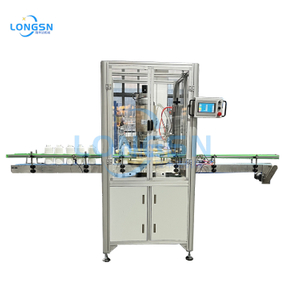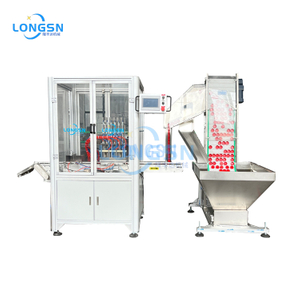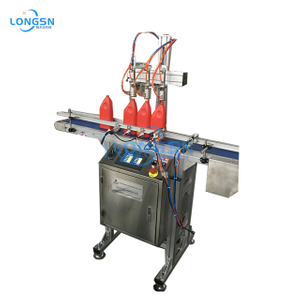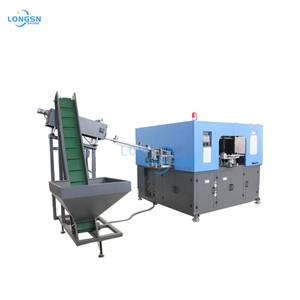Introduction
Did you know that the type of Injection Molding Machine you choose can impact production speed, cost, and precision? With advancements in technology, manufacturers now have three primary options: hydraulic, electric, and hybrid.
In this article, we’ll explore the differences between these machines and explain how each one can enhance your production. You’ll learn which machine is best suited for your specific needs, and how to make an informed choice to improve your manufacturing process.

Injection molding is a manufacturing process used to create parts by injecting molten material into a mold. The material is heated until it reaches a liquid state, then injected into a mold under high pressure. After cooling, the mold is removed, and the final plastic component is extracted. This process is used to create parts for virtually every industry, including consumer products, electronics, medical devices, and automotive applications.
An injection molding machine consists of three key components:
● Injection Unit: This unit melts and injects plastic into the mold cavity.
● Clamping Unit: Holds the mold closed during injection and ejects the part after cooling.
● Control Unit: Controls the parameters such as pressure, temperature, and cycle time.
The injection molding machine plays a pivotal role in ensuring high-quality, efficient, and consistent production.
Types of Injection Molding Machines
There are three main types of injection molding machines:
1. Hydraulic Injection Molding Machines
2. Electric Injection Molding Machines
3. Hybrid Injection Molding Machines
Each machine type uses different power systems and has its unique set of advantages and drawbacks. Understanding these differences helps manufacturers choose the right machine for their specific requirements.
Choosing the right injection molding machine is crucial for ensuring the efficiency, cost-effectiveness, and quality of the manufacturing process. Here are some of the key reasons manufacturers choose injection molding machines:
Production Speed and Efficiency
Injection molding machines are designed to produce parts quickly and efficiently. The speed of the machine depends on the type of power system it uses. Electric injection molding machines, for example, can operate faster due to their precise control over the movement of the injection unit and clamping system. This makes electric machines ideal for high-speed, high-precision applications.
On the other hand, hydraulic machines tend to have slower cycle times, especially for complex parts. However, they excel in applications that require high clamping force and large mold sizes, such as automotive or heavy-duty components.
Hybrid injection molding machines combine the best of both worlds, providing faster cycles like electric machines, while still utilizing hydraulic power for applications that require high clamping force.
Energy Efficiency
Energy consumption is a significant factor in reducing production costs. Electric injection molding machines are known for their energy efficiency. They use servo motors that only draw power when needed, reducing overall energy consumption. This can lead to lower operational costs over time, making electric machines the preferred choice for manufacturers who prioritize energy savings.
Hydraulic machines, while robust and capable of handling large parts, are less energy-efficient. These machines rely on hydraulic pumps, which consume power continuously, even when idle. This results in higher energy costs, especially for long production runs.
Hybrid machines offer a middle ground, using electric motors for the injection process and hydraulic power for clamping. This allows for better energy efficiency compared to fully hydraulic machines, making them a cost-effective option for many manufacturers.
Precision and Control
The level of precision required in production determines the choice of injection molding machine. Electric injection molding machines provide the highest precision due to their use of servo motors, which offer highly controlled movements. This makes them ideal for applications that require intricate, detailed, and small parts, such as electronics and medical devices.
While hydraulic injection molding machines are capable of producing high-quality parts, they are generally less precise than their electric counterparts. This is because hydraulic systems may experience variations in pressure and force, which can lead to minor discrepancies in part dimensions.
Hybrid injection molding machines combine electric precision for injection and hydraulic force for clamping. These machines provide a balance of precision and power, making them suitable for a wide range of parts, from small to large components.

Understanding the key features of injection molding machines is essential for selecting the right machine for your production needs. Below, we outline some of the critical features and how they affect production.
Clamping Force
Clamping force is the force used to hold the mold closed during the injection process. It is essential for ensuring that the mold stays securely closed while the molten plastic is injected under pressure.
Hydraulic injection molding machines are known for their ability to generate high clamping forces, making them suitable for large, thick-walled parts. These machines are often used in industries like automotive and heavy machinery, where high clamping force is necessary to mold large plastic components.
Electric injection molding machines are generally less capable of producing high clamping forces, though newer models have improved in this area. They are more suitable for producing small, precise parts that do not require excessive clamping force.
Hybrid injection molding machines provide a combination of high clamping force and precision, making them versatile machines capable of producing both small and large parts with accuracy.
Cycle Time and Speed
Cycle time refers to the time it takes for the injection molding machine to complete one cycle, from injection to cooling and ejection. Faster cycle times can improve productivity, especially for high-volume production.
Electric injection molding machines are known for their speed and precision. These machines can complete cycles quickly because the electric motors can be precisely controlled, making them ideal for fast-paced production environments where time efficiency is critical.
Hydraulic injection molding machines typically have longer cycle times due to the time required for hydraulic systems to build pressure. While they are slower than electric machines, they excel in handling large, complex parts that require high clamping force.
Hybrid injection molding machines offer the speed of electric machines for the injection process, while still using hydraulic power for the clamping unit. This results in faster production cycles for a broader range of applications.
Energy Consumption and Efficiency
Energy efficiency is a growing concern for manufacturers looking to reduce operating costs and improve sustainability. Electric injection molding machines are the most energy-efficient option, using only the power required for each operation, which reduces overall energy consumption.
Hydraulic injection molding machines, in contrast, use continuous energy to power hydraulic pumps, leading to higher energy consumption. Although advancements in hydraulic technology have improved energy efficiency, electric machines still outperform them in this regard.
Hybrid injection molding machines provide a more energy-efficient solution than hydraulic machines, as they use electric motors for the injection process, consuming energy only when necessary.
Applications in Various Industries
Automotive Industry
In the automotive industry, plastic components are essential for everything from dashboards and interior panels to bumpers and exterior parts. Hydraulic injection molding machines are often used in automotive manufacturing due to their ability to handle large molds and produce parts with high clamping force. These machines are well-suited for mass production runs of large automotive components.
For smaller, intricate parts such as connectors, electric systems, or electronic enclosures, electric injection molding machines are often preferred due to their high precision and energy efficiency.
Hybrid injection molding machines are increasingly used in the automotive industry because they offer the versatility to produce both small, precise parts and large components, all within one machine.
Consumer Electronics
Consumer electronics, including mobile phone housings, connectors, and components, require precision and high production volumes. Electric injection molding machines are ideal for this industry due to their ability to produce small, detailed parts with tight tolerances.
For larger parts, such as plastic casings for electronics, hydraulic injection molding machines may be used. These machines provide the high clamping force required to mold larger components efficiently.
Hybrid injection molding machines offer the flexibility needed in consumer electronics manufacturing, allowing companies to produce both small and large components using a single machine.
Medical Devices
The medical device industry requires high precision and the ability to produce small, intricate parts. Electric injection molding machines are perfect for manufacturing medical components such as syringes, surgical instruments, and implants because they offer precise control and high accuracy.
Hybrid injection molding machines are also valuable in the medical device industry, especially for producing parts that require both high clamping force and precision. These machines are suitable for a wide range of medical applications, from small implants to larger devices.
Comparison Table: Hydraulic vs. Electric vs. Hybrid Injection Molding Machines
Feature | Hydraulic Injection Molding Machine | Electric Injection Molding Machine | Hybrid Injection Molding Machine |
Clamping Force | High, suitable for large parts | Lower, suitable for smaller parts | High, flexible for both small and large parts |
Precision | Moderate precision | High precision | Balanced precision and force |
Energy Efficiency | Low | High | Moderate |
Speed | Slower cycle times | Faster cycle times | Faster than hydraulic, slower than electric |
Cost | Lower initial cost | Higher initial cost | Moderate cost |
Maintenance | Requires more maintenance | Low maintenance | Moderate maintenance |
How to Choose the Right Injection Molding Machine?
Choosing the right injection molding machine depends on various factors, including part size, production volume, and energy efficiency. Here’s a breakdown of how to make the right choice:
Production Volume
For high-volume production of small parts, electric injection molding machines are the best option due to their speed and precision. For high-volume production of large parts, hydraulic machines are preferred for their ability to handle large molds and produce parts with high clamping force.
Hybrid machines are suitable for manufacturers who need the flexibility to produce both small and large parts with high efficiency.
Energy Efficiency
If reducing energy consumption is a priority, electric injection molding machines are the most energy-efficient option. Hybrid machines are also a good choice for manufacturers seeking a balance between energy efficiency and production capacity.
Budget
Electric injection molding machines generally have a higher upfront cost but can save money in the long run due to their energy efficiency and low maintenance costs. Hydraulic machines tend to be more affordable initially but may incur higher energy and maintenance costs over time.
Hybrid machines offer a balance between cost and performance, making them a versatile option for manufacturers with varied production needs.
Conclusion
Choosing the right injection molding machine depends on your specific production needs. Hydraulic machines are ideal for large parts and high clamping force, while electric machines excel in precision and energy efficiency. Hybrid machines offer versatility and a balance between the strengths of both types.
By understanding the key features and advantages of each type of injection molding machine, manufacturers can make informed decisions that optimize their production processes, reduce costs, and improve product quality. Choosing the right machine will lead to better efficiency, faster cycle times, and more consistent results in the long term.
In this article, we explored the differences between Hydraulic, Electric, and Hybrid Plastic Injection Molding machines. Each type offers distinct advantages depending on your production needs. While hydraulic machines are known for their power, electric machines excel in energy efficiency, and hybrid models combine the best of both worlds.
When selecting the right Injection Molding Machine, consider factors like cost, energy use, and precision. Companies like Zhangjiagang Longsn Machine Co., Ltd. provide high-quality machines that enhance efficiency and output. Their products deliver excellent value, offering reliable performance across industries.
FAQ
Q: What is a Hydraulic Injection Molding Machine?
A: A Hydraulic Injection Molding Machine uses hydraulic power to drive the injection process. It’s known for its reliability and high clamping force, making it ideal for large-scale production.
Q: How does an Electric Injection Molding Machine work?
A: Electric Injection Molding Machines use servo motors for precise movements, offering high energy efficiency and improved precision. They are quieter and faster than hydraulic machines.
Q: What are the advantages of Hybrid Injection Molding Machines?
A: Hybrid Injection Molding Machines combine the power of hydraulics with the precision of electric motors. They offer energy efficiency, faster cycle times, and high accuracy in one machine.
Q: Which type of Injection Molding Machine is most cost-effective?
A: Electric machines are typically more energy-efficient and cost-effective in the long run. However, hydraulic machines may be more affordable upfront, depending on production needs.
Q: How do Bottle Neck Cutters relate to Injection Molding?
A: Bottle neck cutters are used to trim the neck of molded bottles, ensuring smooth finishes and precise shapes after the injection molding process.
Q: Can a Neck Cutter Machine be used with all Injection Molding Machines?
A: Yes, neck cutter machines are compatible with both hydraulic and electric injection molding machines, allowing for precise trimming of bottle necks in various manufacturing setups.
Q: What is the role of a Bottle Neck Trimmer in molding processes?
A: A bottle neck trimmer helps remove excess material from the neck area of the molded bottles, ensuring consistent quality and improving the final product appearance.

 English
English

















